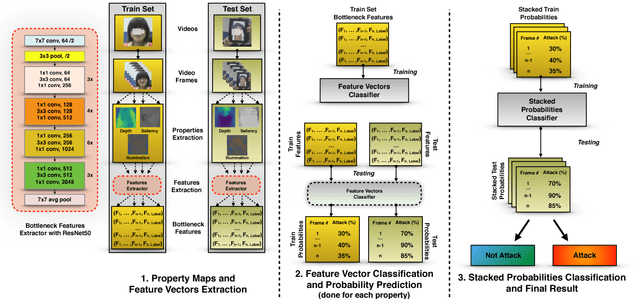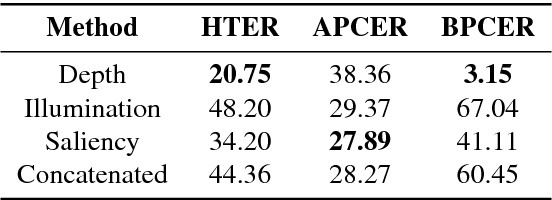Carlos Beluzo
FaceSpoof Buster: a Presentation Attack Detector Based on Intrinsic Image Properties and Deep Learning
Feb 07, 2019



Abstract:Nowadays, the adoption of face recognition for biometric authentication systems is usual, mainly because this is one of the most accessible biometric modalities. Techniques that rely on trespassing these kind of systems by using a forged biometric sample, such as a printed paper or a recorded video of a genuine access, are known as presentation attacks, but may be also referred in the literature as face spoofing. Presentation attack detection is a crucial step for preventing this kind of unauthorized accesses into restricted areas and/or devices. In this paper, we propose a novel approach which relies in a combination between intrinsic image properties and deep neural networks to detect presentation attack attempts. Our method explores depth, salience and illumination maps, associated with a pre-trained Convolutional Neural Network in order to produce robust and discriminant features. Each one of these properties are individually classified and, in the end of the process, they are combined by a meta learning classifier, which achieves outstanding results on the most popular datasets for PAD. Results show that proposed method is able to overpass state-of-the-art results in an inter-dataset protocol, which is defined as the most challenging in the literature.
 Add to Chrome
Add to Chrome Add to Firefox
Add to Firefox Add to Edge
Add to Edge